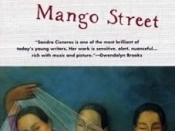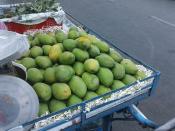By: Lee A. Zito
The House On Mango Street is a book filled with colorful chapters which are small yet powerful. Sandra Cisneros has poetically written each vignette as short pieces of literary art. All are reflections from her childhood. The text is literally written in a child's sort of language, but through this the reader receives a deeper meaning within Cisneros' descriptive thoughts.
Growing up in Chicago as a young hispanic girl, Cisneros describes emotionally and physically her surroundings while living on Mango Street. For the main character, Esperanza, Mango Street is not what she considers a home, but represents a young girl's struggle for self identity among poverty, disappointment, and her family. She detests Mango Street, determined to someday live in a beautiful house where she will be independent and happy. This dream is far different than Esperanza's reality lived during her days at the little house on Mango Street.
Surrounded by delinquents, dirty old men, and bad influences, Esperanza lives with her poor Mexican family. She admires her family's physical differences as described in the chapters "Hair" and "The Family With Little Feet", but she also admires their personalities. With the eyes of a child, Cisneros uses the main character Esperanza to discuss how she views the world. When her Grandfather dies in the chapter "Papa Wakes Up In The Dark", Esperanza describes how her Father tells her about it. As he prepares to leave for the funeral in Mexico, it is her job to then tell her younger siblings. She later consoles him. As the oldest daughter, this is part of her role.
Being an oldest child, I can relate to this. When parents are grief stricken, or caught in an emotional moment, it is our duty to care for the younger siblings. This may be...



The House on Mango Street
The combination of technical information about the book with the authors personal opinion and revelation of how the author benefited from reading "The House on Mango Street" makes this piece a great read. It is well-structured, obviously well-thoughtout, provides excellent detail and is satisfactorily in-depth.
I commend you on a piece well-done, MccaddenSucks.
4 out of 5 people found this comment useful.